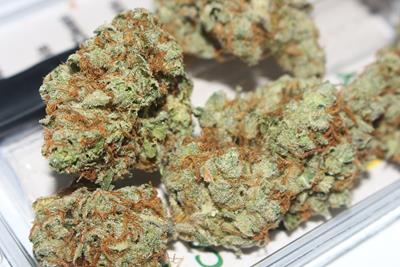
Saturday October 10, 2015
 Health/Science
Health/Science
Medicinal marijuana is becoming more and more of a major talking point for many Americans around the country. Thanks to its great effects in helping people with issues ranging from serious seizures to social anxiety, cannabis is proving it’s worth.
Having said that, in order to enter a medical marijuana dispensary across the country (and subsequently get medical pricing), you’ll need a medical marijuana card. If you’re in Washington or Oregon, here’s how to get one of your own:
How to Get a Medical Marijuana Card in Washington:
Similar to Colorado rules and regulations, you don’t need to have a medical marijuana card to use marijuana legally, thanks to legalized recreational cannabis across the state. You can also be as young as 18 to become a medical marijuana patient (where as you must be 21 years of age or older to buy recreationally).
Having said that and thanks to the approval of I-502, the state’s rules around medical marijuana have become a bit foggy although Washington’s Medical Use of Cannabis Act has not been effected – at least until next year.
For now, if you have a medical card from Washington, you’ll not only be able to purchase product from a medical marijuana dispensary (up to 24 ounces), but you’re also allowed to grow up to 15 plants (per residence) for personal use and buy marijuana clones from dispensaries to kick start your growing efforts. Other laws will be set into motion come July 2016, which will alter medical patients possession limits and how many plants they’ll be able to grow at home. These measures will be dependent on whether or not the patient is registered in the state’s patient database.
In order to obtain your Washington medical marijuana card, you’ll need to do the following:
- Meet with a certified doctor to see if you have a qualifying health condition where use of medical marijuana would prove useful. These conditions include: muscle spasms, seizures, loss of appetite, cancer, chronic pain and more. Since July 2015, both PTSD and traumatic brain injury were also added as qualifying conditions.
- A new authorization has to be written or successfully fill out a form created by the Department of Health – both of which have be printed on tamper-proof paper. No I.D.s are necessary, however your approved application will be necessary to show proof at dispensaries.
How to Get a Medical Marijuana Card in Oregon:
Thankfully, Measure 91 (which allows Oregonians the ability to grow, possess and distribute) and Senate Bill 460 (which allows medical marijuana shops to sell retail marijuana to individuals 21 years of age or older) doesn’t impact the state’s medical marijuana program.
Medical marijuana cardholders are able to purchase product through any dispensary in the state, and will continue to pay lower prices especially after recreational marijuana taxes go into effect January 1st, 2016.
In order to apply for a medical card, you’ll have to first fill out Oregon’s application – and follow the steps below. Don’t forget to take a look at the Department of Public Health if you need help along the way.
- Fill out the application on the Oregon Public Health Department’s website.
- Visit a doctor who can complete the Attending Physician Statement (APS) to verify your need for one of the restricted health issues, including cancer, PTSD, severe pain seizures and muscle spasms.
- Copy a valid photo ID and include a payment of $200.
- Remember to send in your application within 90s of your doctor signing the APS.
- You’ll receive your card within 30 days of your application being submitted, and from there you’ll be able to visit any medical marijuana shop in Oregon – plus the following states which respect reciprocity: Arizona, Delaware, Maine, Montana, Rhode Island, Nevada and Michigan.
Photo Credit: Chuck Coker (license)







